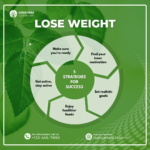What if I told you there’s a way to lose weight that involves more butter, cheese, and bacon? Join us as we explore this…
Learn how to burn fat and lose weight while resting (FREE ebook) — http://zimlean.com/
Weight loss program personalized just for you — http://zimbody.com/
This channel contains affiliate links which means we might get a commission if you make a purchase, without any additional cost to you.
The ketogenic diet, commonly known as the keto diet, is a nutritional approach that has gained significant popularity for its potential to promote rapid weight loss. The core principle of the diet is to drastically reduce carbohydrate intake and replace it with fat. This shift in macronutrient intake pushes your body into a metabolic state known as ketosis.
What is Ketosis?
Ketosis is a metabolic state in which your body uses fat as its primary source of energy instead of carbohydrates. When you consume a typical diet, your body converts carbohydrates into glucose, which is used as the main fuel source. By severely limiting carbohydrates, your body is forced to find an alternative fuel source. It starts converting fatty acids from your diet and your fat stores into ketones, molecules that can be used to generate energy.
Reducing Carbohydrates:
To enter ketosis, you need to reduce your carbohydrate intake to typically around 20 to 50 grams per day. This means eliminating most grains, sugars, fruits, and starchy vegetables from your diet. It’s crucial to read nutrition labels carefully because carbs are often hidden in sauces, dressings, and packaged foods.
Increasing Healthy Fats:
With carbs off the menu, your diet will primarily consist of fats. It’s important to focus on healthy sources of fat, such as avocados, nuts, seeds, olive oil, and fatty fish like salmon. These foods provide essential fatty acids and nutrients that support overall health. You can also include saturated fats like butter and coconut oil, which are stable at high temperatures for cooking.
Adequate Protein Intake:
Protein should be consumed in moderation. The goal is to eat enough protein to maintain muscle mass but not so much that it disrupts ketosis. For most people, this is about 1.2 to 1.7 grams of protein per kilogram of body weight. Good protein sources include meat, poultry, fish, eggs, and some dairy products like cheese and Greek yogurt.
Monitoring Ketosis:
To ensure that you are in ketosis, you can use methods like ketone urine strips, a breath ketone analyzer, or a blood ketone meter. These tools measure the level of ketones in your body and confirm that you are indeed using fat for energy.
Managing Side Effects:
The transition to ketosis can be challenging. Common short-term side effects include fatigue, headache, dizziness, and irritability, often referred to as the “keto flu.” These symptoms typically diminish within a few days to weeks as your body adjusts. Staying hydrated and maintaining an adequate intake of electrolytes (sodium, potassium, magnesium) is critical.
Sustainability and Safety:
While a ketogenic diet can offer rapid weight loss and other health benefits such as improved blood sugar control and increased mental clarity, it’s not suitable for everyone. People with certain health conditions, such as pancreatitis, liver failure, disorders of fat metabolism, or certain mitochondrial disorders, should avoid a ketogenic diet. Additionally, because of its restrictive nature, it can be challenging to maintain long-term.
This means that you MUST discuss with your healthcare provider BEFORE you take the keto diet.
Planning Your Keto Meals
Focus on high-fat, moderate protein, and low-carb foods. Think avocados, cheese, fatty fish, and yes, even bacon. But it’s not just about piling on fats; choosing the right types of fats is crucial.
Start by clearing your pantry. Out with the old carbs, in with the new fats. Then, stock up on keto staples. A 2019 study in the Journal of Nutrition highlighted the importance of meal planning in successful long-term weight loss on keto.
Overcoming Common Pitfalls
Many beginners struggle with the initial transition. It’s called the ‘keto flu’, and it’s totally normal. You might feel tired or foggy, but don’t worry, it’s temporary. Staying hydrated and keeping electrolytes balanced is key. Think about adding bone broth or more salt to your diet during the first few weeks.
Remember, every journey has its bumps, but these are just stepping stones to success!
Tracking Your Progress
Tracking is vital. Not just pounds lost but how you feel. Start a keto diary. Note changes in your energy, sleep, and how your clothes fit. This personal record will keep you motivated and help tweak your diet as needed.
Keto isn’t just a diet; it’s a lifestyle. And like any major lifestyle change, it requires commitment and adaptation. The rewards, however, can be substantial, from weight loss to improved mental clarity and energy.
This content was originally published here.




















